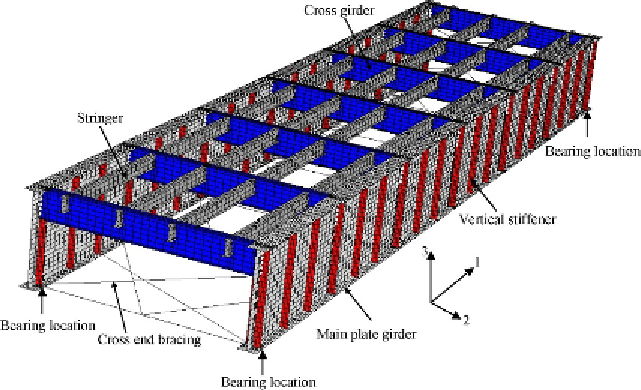Civil Engineering Reference
In-Depth Information
geometry, initial geometric imperfections, and nonlinear material properties
of the steel used. A four-node doubly curved shell element with reduced
integration (S4R) was used to model the flanges and webs of the stringers,
cross girders, and main plate girders. The element was also used to model the
stiffeners of the web of the main plate girders. The bracing members were
modeled using structural 2D truss elements (T2D2) available in the ABA-
QUS [1.29] element library. The bolts connecting the cross girders to the
main girders and the bolts connecting the stringers to the cross girders were
modeled using JOINTC joint elements, available in the ABAQUS [1.29]
element library, having stiffnesses in two directions, which simulated the
SS end boundary conditions. In order to choose the finite element mesh that
provides accurate results with minimum computational time, convergence
studies were conducted. It is found that approximately 153
260 mm
(length by width of S4R element) ratio provides adequate accuracy in
modeling the webs of the main plate girders, while a finer mesh of approx-
imately 75
260 mm was used in the flanges of the main plate girders (see
vides adequate accuracy in modeling the webs of the cross girders, while a
finer mesh of approximately 76
251 mm was used in the flanges of the
Figure 6.27 Finite element mesh of the double-track open-timber floor plate girder
railway steel bridge.

Search WWH ::

Custom Search